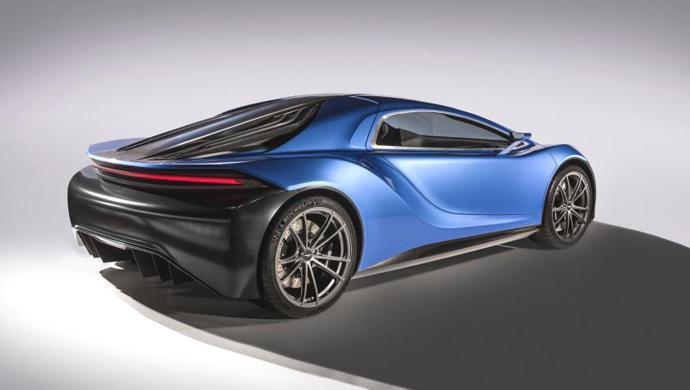
Almost 70 years after Rover built the world’s first jet powered car, Chinese engineering company Techrules has unveiled its Turbine-Recharging Electric Vehicle (TREV) technology – a range extender system that uses a micro-turbine to charge a battery pack, which in turn powers the motors driving the wheels.

The technology is said to offer unprecedented levels of efficiency and performance, and ultra-low environmental impact but unfortunately for the everyday driver, it is applied to an entirely impractical supercar. The prototype which, it is claimed, is capable of the equivalent of 1,569 mpg, is currently being tested at Silverstone racetrack ahead of production in Europe.
Gas turbines have few moving parts and are immensely reliable – it’s the reason their use is widespread in aviation, and why it’s no surprise that car makers have considered for use in cars. Rover embraced the jet age when it successfully developed the first-ever gas turbine powered car in 1949.
The Rover gas turbine car had long been shelved by the time Chrysler launched its own version in the early 1960s. The Chrysler was the first and only turbine-powered production car. More than 1.1 million test miles were driven by the 50 cars given to the public and although the car were remarkably reliable and comfortable, it was expensive to produce and inefficient when driving in town. All but a handful were scrapped by Chrysler.

The Y2K is a gas turbine powered produced motorcycle. In common with the Chrysler turbine car, the bike can run on a variety of fuels and produces an abundance of power with almost no vibration from its engine. The bike is produced in tiny numbers, which is hardly surprising – while queuing in traffic, it is not uncommon for the exhaust gases to melt the bumper of any car that edges too close.
ETA: Ethical breakdown cover
Established over 25 years ago, and with over 5,000 recovery trucks on call 24/7, the ETA has a proven track record of providing efficient, reliable breakdown cover. We handpick only the best local mechanics and garages around Britain to send out if you break down. We believe this way of working is efficient, environmentally friendly and helps support local communities and economies, too. It’s one of the reasons we have been rated as ethical in Britain.

Chris Hope
‘while queuing in traffic, it is not uncommon for the exhaust gases to melt the bumper of any car that edges too close.’ … or, presumably, the legs of any cyclist travelling behind it. Seems like a pretty fundamental design fault to me.
@cwhope
michael
Rover were not the only British car company to make a turbine car, Austin did as well, a much modified Austin Princess. Registration number was TUR 1. I happened to see this car out on test one day, read what happened here:
http://www.austinmemories.com/styled-27/index.html
(Scroll down to “memories of a schoolboy”).